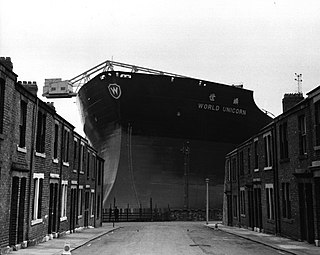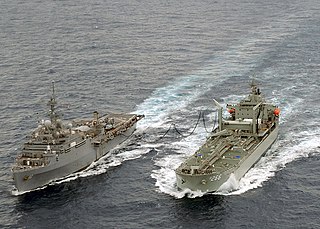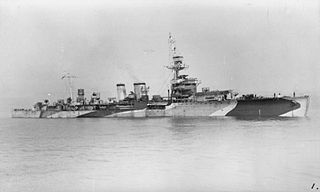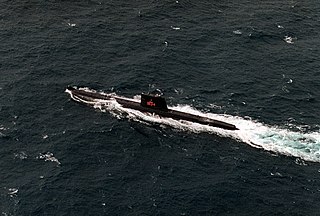
List of ships present at the International Fleet Review, Portsmouth, July 2005. None of the photographs were taken at the Review unless otherwise noted.

List of ships present at the International Fleet Review, Portsmouth, July 2005. None of the photographs were taken at the Review unless otherwise noted.
















MV Balmoral, SS Shieldhall, MV John Jerwood (Sea Cadet offshore training vessel), MV Princess Caroline, MV Sand Harrier, Tug Challenge

During the 18th and 19th centuries, a sloop-of-war was a warship of the British Royal Navy with a single gun deck that carried up to 18 guns. The rating system of the Royal Navy covered all vessels with 20 or more guns; thus, the term encompassed all unrated warships, including gun-brigs and cutters. In technical terms, even the more specialised bomb vessels and fire ships were classed by the Royal Navy as sloops-of-war, and in practice these were employed in the role of a sloop-of-war when not carrying out their specialised functions.
This is a list of the naval forces from the United Kingdom that took part in the Falklands War, often referred to as "the Task Force" in the context of the war. For a list of naval forces from Argentina, see Argentine naval forces in the Falklands War.

NRP Bérrio (A5210) was a fleet support tanker of the Portuguese Navy. She was built by Swan Hunter in 1969 at Hebburn, England as RFA Blue Rover (A270) of the Rover-class and from 1970 to 1993 was part of the British Royal Fleet Auxiliary. In 1982 during her British service she participated in the Falklands War.

Swan Hunter, formerly known as Swan Hunter & Wigham Richardson, is a shipbuilding design, engineering, and management company, based in Wallsend, Tyne and Wear, England.
In the Royal Navy and other navies of Europe and the Commonwealth of Nations, ships are identified by pennant number. Historically, naval ships flew a flag that identified a flotilla or type of vessel. For example, the Royal Navy used a red burgee for torpedo boats and a pennant with an H for torpedo boat destroyers. Adding a number to the type-identifying flag uniquely identified each ship.

The Pakistan Navy (PN) is the naval warfare branch of the Pakistan Armed Forces. The Chief of the Naval Staff, a four-star admiral commands the navy. The Pakistan Navy operates on the coastline of Pakistan in the Arabian Sea and Gulf of Oman. It was established in August 1947, following the independence of Pakistan from the United Kingdom.

A training ship is a ship used to train students as sailors. The term is mostly used to describe ships employed by navies to train future officers. Essentially there are two types: those used for training at sea and old hulks used to house classrooms. As with receiving ships or accommodation ships, which were often hulked warships in the 19th Century, when used to bear on their books the shore personnel of a naval station, that were generally replaced by shore facilities commissioned as stone frigates, most "Training Ships" of the British Sea Cadet Corps, by example, are shore facilities.

A replenishment oiler or replenishment tanker is a naval auxiliary ship with fuel tanks and dry cargo holds which can supply both fuel and dry stores during underway replenishment (UNREP) at sea. Many countries have used replenishment oilers.

HMS Danae was the lead ship of the Danae-class cruisers, serving with the Royal Navy between the world wars and with the Polish Navy during the latter part of World War II as ORP Conrad.

RFA Wave Knight is a Wave-class fast fleet tanker of the Royal Fleet Auxiliary (RFA) of the United Kingdom tasked with providing fuel, food, fresh water, ammunition and other supplies to Royal Navy vessels around the world.

The International Festival of the Sea was held at H.M. Naval Base, Portsmouth between 24 and 27 August 2001. It was the third in a series of International Festivals of the Sea held in the United Kingdom since 1996. The event allowed people to walk around the Naval Base, to go on board many of the visiting vessels, including several vessels belonging to the Royal Navy. It also allowed people to visit the historic dockyard, including HMS Victory and Mary Rose. There were also many maritime displays, street entertainers, military bands, music concerts and unique shops.
In 1989 the Royal Navy was under the direction of the Navy Department in the UK Ministry of Defence. It had two main commands, CINCFLEET and Naval Home Command.

PNS/M Ghazi (S-134), formerly known as NRP Cachalote (S165), was a diesel-electric submarine that served in the Pakistan Navy from 1975 until decommissioned in 2006. Based on the French Daphné-class design, she was built in Portugal with French assistance as a member of the Albacora class and had served in the Portuguese Navy before being purchased by Pakistan in 1977. In the service with Pakistan Navy, she was the only ship of her Albacora class in the Submarine Command.

PNS Babur (D-182) was a Tariq-class destroyer that served in the Surface Command of the Pakistan Navy from 1993 until being decommissioned in 2014. Before commissioning in the Pakistan Navy, she served in the Royal Navy, formerly designated as HMS Amazon as a general purpose frigate.

PNS Khaibar (DDG-183) is the Tariq-class destroyer currently in active duty in the Surface Command of the Pakistan Navy since 1994.

PNS Badr (D-184) was the Tariq-class destroyer that served in the Surface Command of the Pakistan Navy from 1994 until being decommissioned from the service in 2014.

PNS Tippu Sultan (DDG-185), a Tariq-class destroyer, served in the Pakistan Navy after it was acquired in 1994. Her design was based on the British Type 21 frigate, and previously served in the Royal Navy as HMS Avenger as a general purpose frigate.